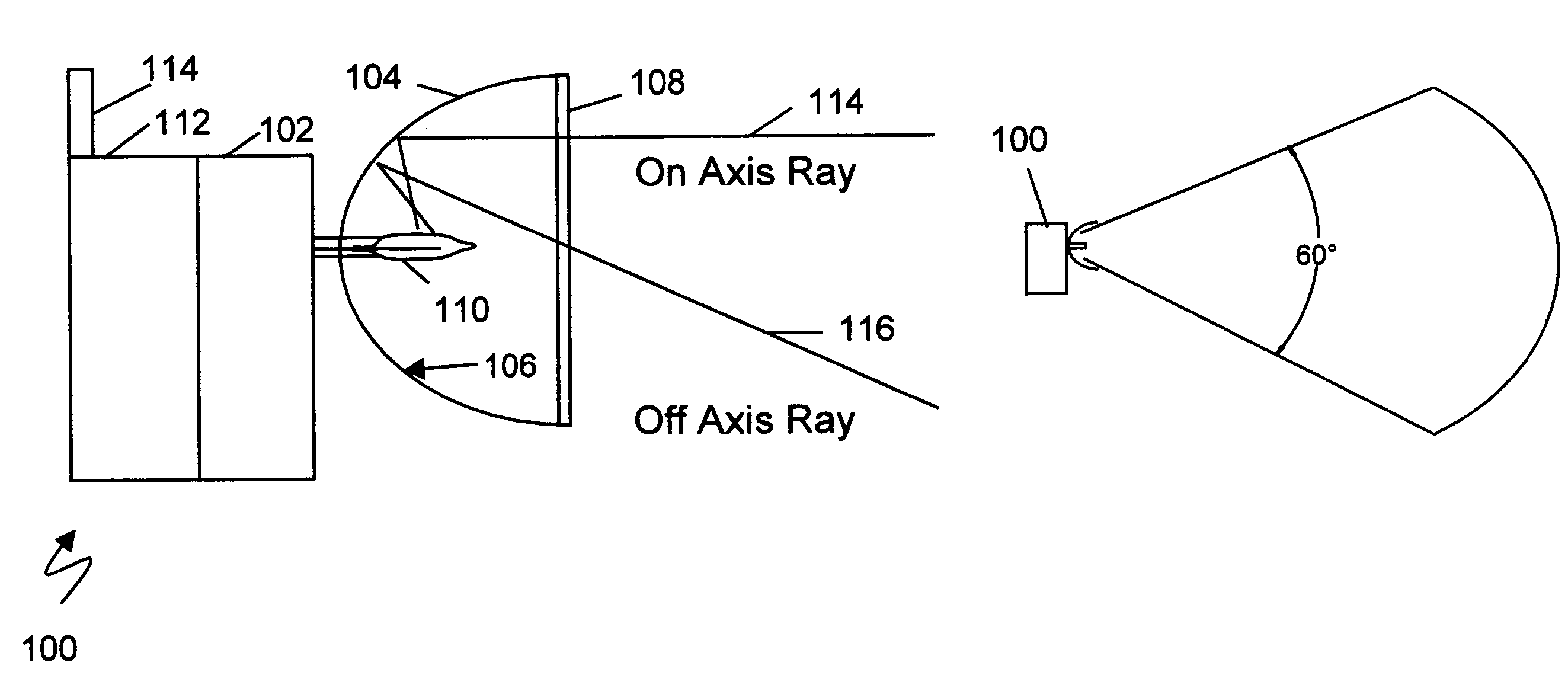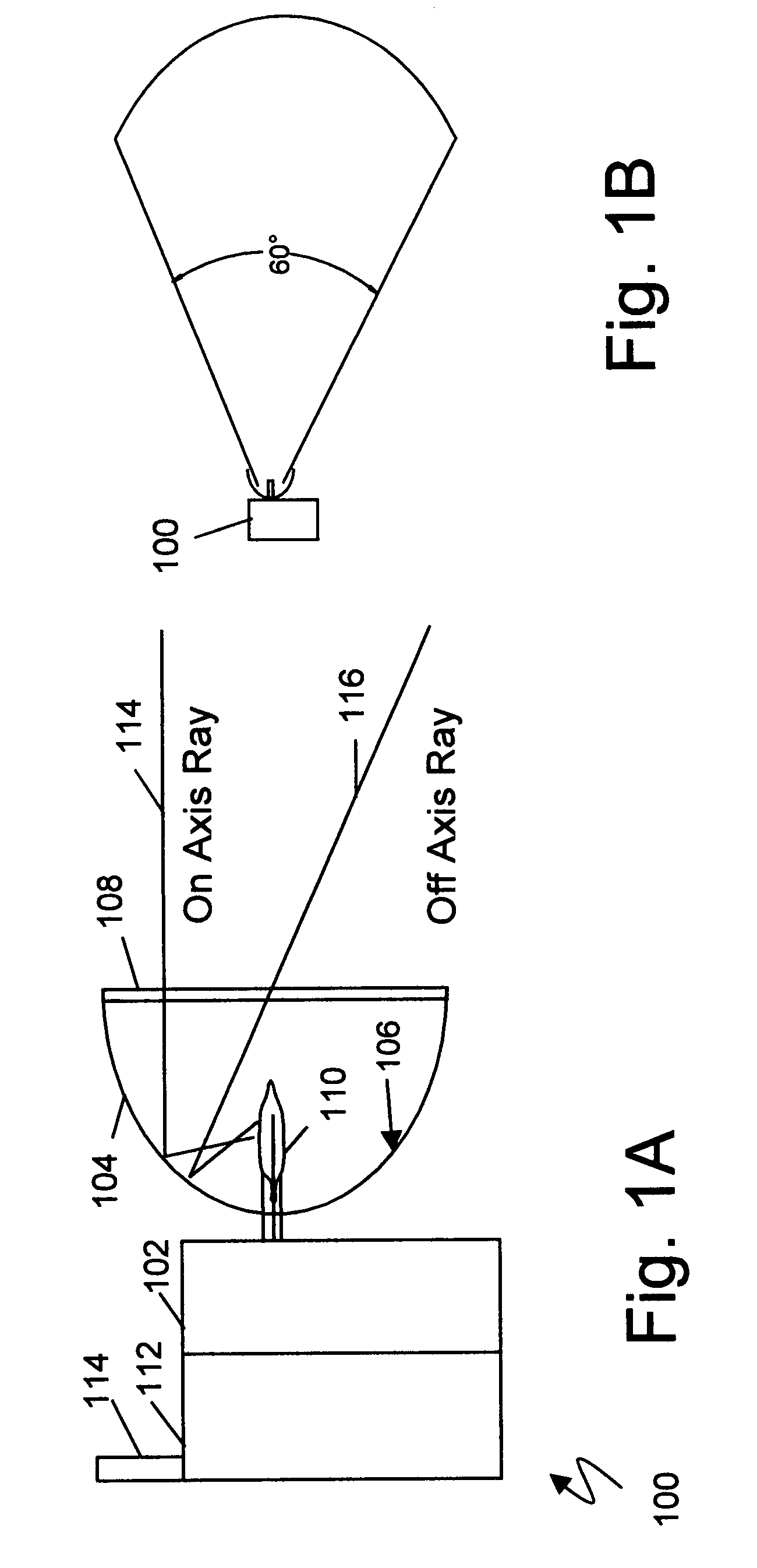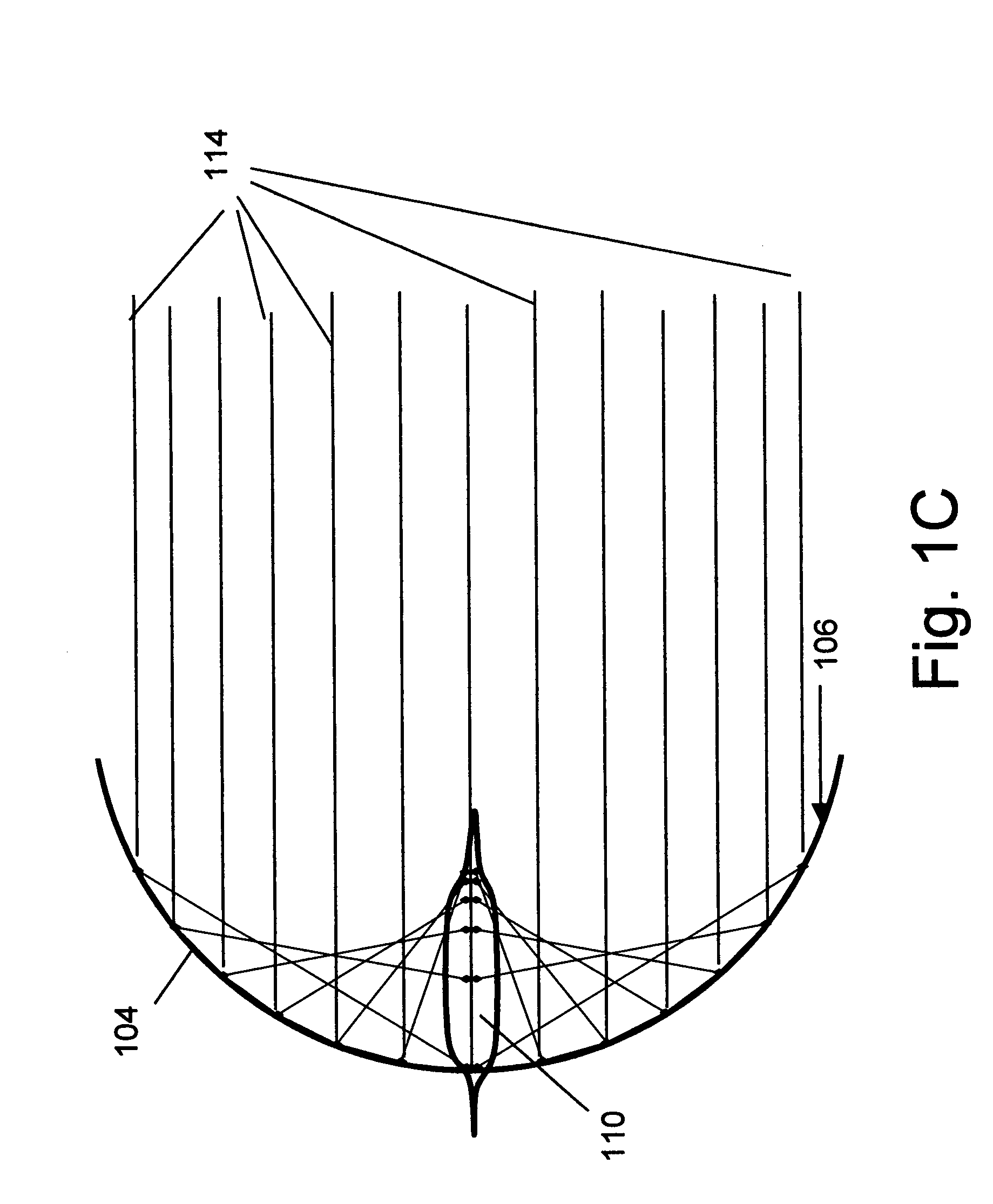Optical flame detection system and method
a flame detection and optical technology, applied in the field of flame detection, can solve the problems of loss of total value, destruction of indeterminate wildlife, millions of acres of forest and forest products, and destruction of the entire economy, and achieve good reflectivity
- Summary
- Abstract
- Description
- Claims
- Application Information
AI Technical Summary
Benefits of technology
Problems solved by technology
Method used
Image
Examples
examples
[0041]Demonstration by way of the following examples has been accomplished.[0042]1.0 A commercial Geiger Mueller “UV TRON” detector from Hamamatsu, Inc. was tested in accordance to the advertised specifications. The performance of the UV TRON was measured prior to adding the collector and found to be better than the advertised specification of 5 meters with detection of a one cm^2 flame (kitchen match) with a 90 degree FOV at about 7-8 meters. This same detector was tested in an environment of intense UVA mercury vapor lights and did not respond to the lighting. Likewise it was tested in bright sunlight directing the detector to the sun. Again it did not respond without the flame. It performed as advertised. The same detector was then configured with an electroformed collector with first surface of 20% phosphorus and balance nickel. The collector was placed with the GM tube axially aligned such that the mid-point of the GM tube was at the spherical focal point. The diameter of the s...
PUM
 Login to View More
Login to View More Abstract
Description
Claims
Application Information
 Login to View More
Login to View More - R&D
- Intellectual Property
- Life Sciences
- Materials
- Tech Scout
- Unparalleled Data Quality
- Higher Quality Content
- 60% Fewer Hallucinations
Browse by: Latest US Patents, China's latest patents, Technical Efficacy Thesaurus, Application Domain, Technology Topic, Popular Technical Reports.
© 2025 PatSnap. All rights reserved.Legal|Privacy policy|Modern Slavery Act Transparency Statement|Sitemap|About US| Contact US: help@patsnap.com



